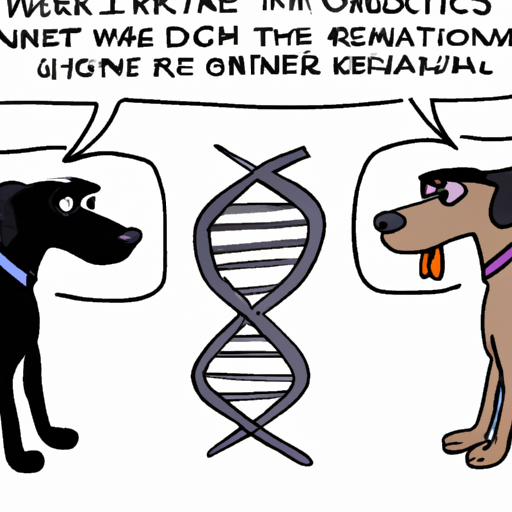Understanding Inbreeding
Inbreeding, dear reader, is a term you’ve probably heard thrown around in discussions about breeding practices, particularly those associated with purebred dogs. It can be a contentious topic, with many nuances and complexities to consider. Simply put, inbreeding refers to the mating of two dogs that are closely related to each other genetically—think siblings, parents and offspring, or cousins.
The primary goal of inbreeding is to maintain certain desirable traits within a breed. However, like a double-edged sword, this practice can also inadvertently reinforce detrimental genetic conditions, leading to health and behavioral issues.
The Consequences of Inbreeding
Let’s journey into the potential outcomes of inbreeding. The most significant consequence is the increased risk of genetic disorders. When two dogs with similar genetic material mate, the probability that their offspring will inherit double copies of harmful genes drastically increases. This could lead to conditions such as:
- Hip Dysplasia
- Heart Disease
- Eye Disorders
- Deafness
- Breathing Problems
The table below outlines some common genetic disorders and their associated breeds:
| Breed | Common Genetic Disorder |
|---|---|
| Bulldog | Brachycephalic Syndrome |
| Dalmatian | Deafness |
| German Shepherd | Hip Dysplasia |
| Cavalier King Charles Spaniel | Heart Disease |
| Labrador Retriever | Eye Disorders |
Responsible Breeding Practices
As a caregiver, it is your responsibility to ensure the well-being of your furry friend. When choosing a puppy, it’s crucial to consider the ethical implications of supporting breeders who practice inbreeding.
The best breeders adhere to responsible breeding practices, such as:
- Testing for genetic conditions
- Avoiding the breeding of closely related dogs
- Prioritizing health and temperament over physical appearance
The Role of Genetic Diversity
Now, let’s delve into the concept of genetic diversity. In essence, genetic diversity is the total number of different genes present in a breed’s gene pool. Greater diversity equates to healthier, more robust dogs.
In contrast, inbreeding reduces genetic diversity, which can lead to an increased risk of inherited diseases. Therefore, promoting genetic diversity should be a priority for any breeder or caregiver.
The Potential for Change
Despite the challenges, there is hope on the horizon. More and more breeders and kennel clubs are recognizing the importance of genetic diversity and are taking steps to promote healthier breeding practices.
As a caregiver, you play a significant role in this change. By choosing to support responsible breeders, you can help create a demand for healthier, more genetically diverse dogs.
Frequently Asked Questions
Q: Is inbreeding illegal?
A: Not necessarily, but it is considered unethical by many animal welfare organizations.
Q: Can inbred dogs be healthy?
A: While some inbred dogs may not exhibit any health problems, the risk of genetic disorders is significantly increased.
Q: How can I tell if a breeder is responsible?
A: Responsible breeders prioritize health over appearance, avoid breeding closely related dogs, and test for genetic conditions.
Q: What can I do to promote genetic diversity?
A: As a caregiver, you can choose to support breeders who prioritize genetic diversity and responsible breeding practices.
In conclusion, while inbreeding is a complex issue with no easy solutions, the power to effect change lies with us, the caregivers. By making informed decisions and advocating for responsible breeding practices, we can help ensure a healthier future for our beloved canine companions.



